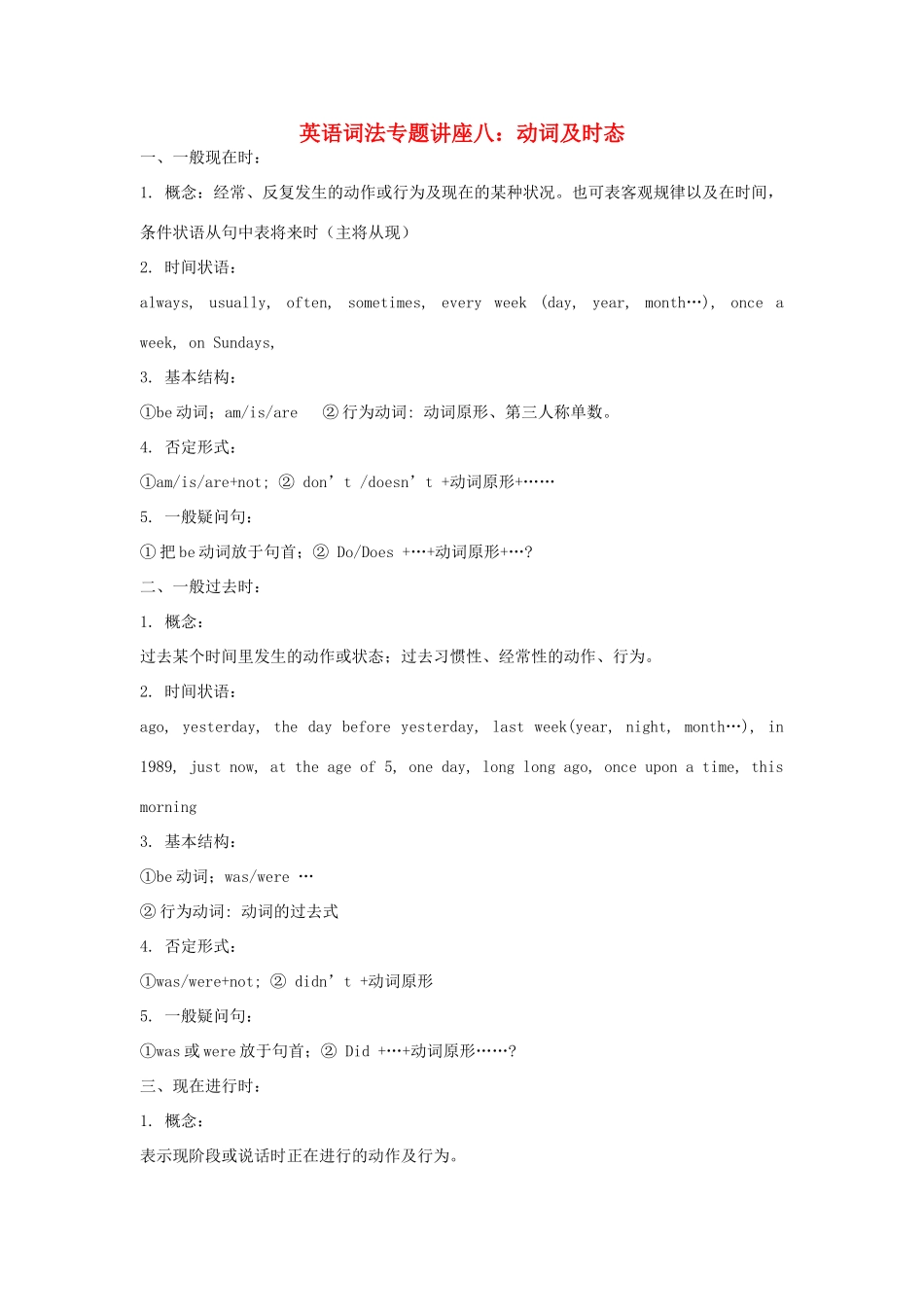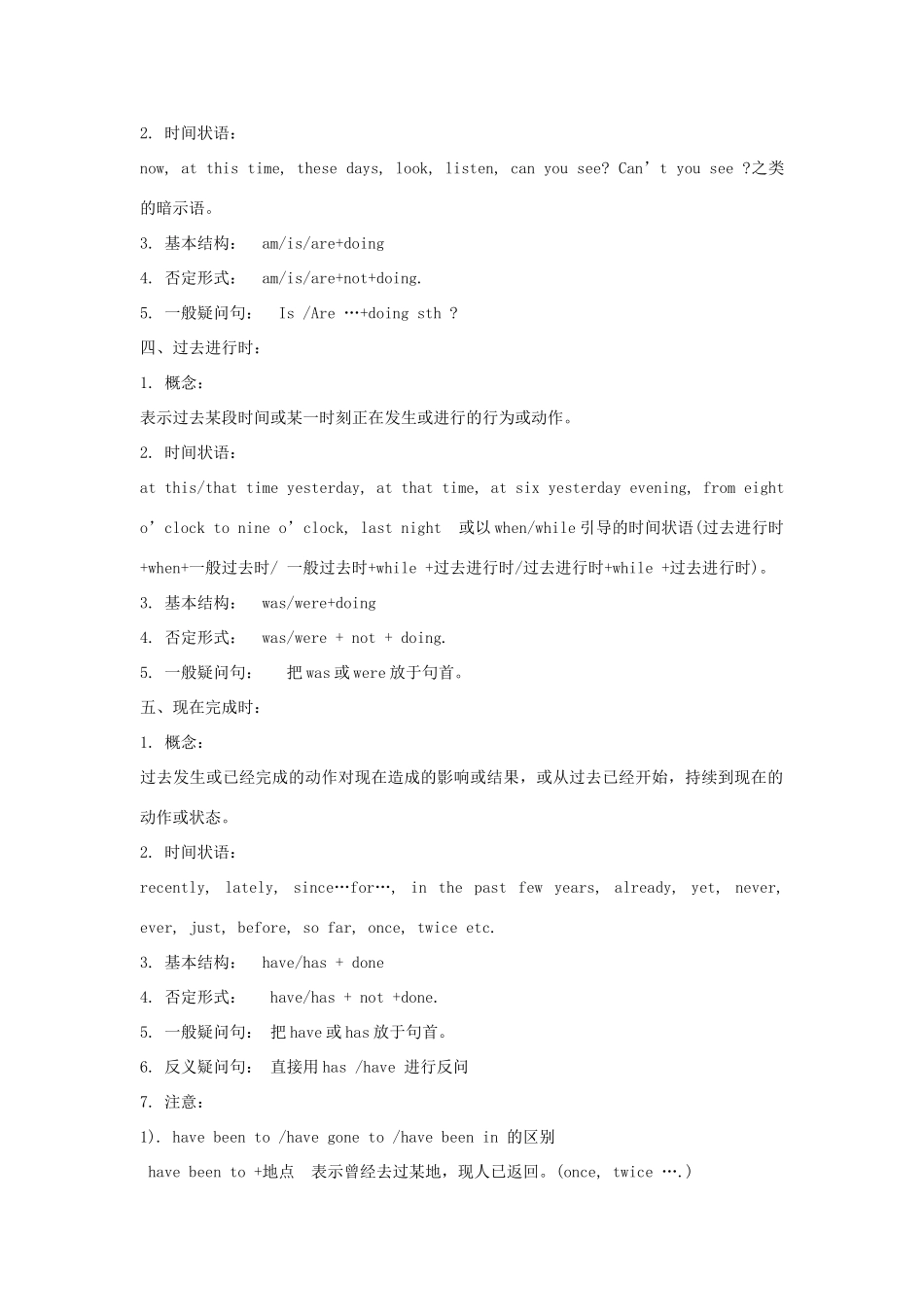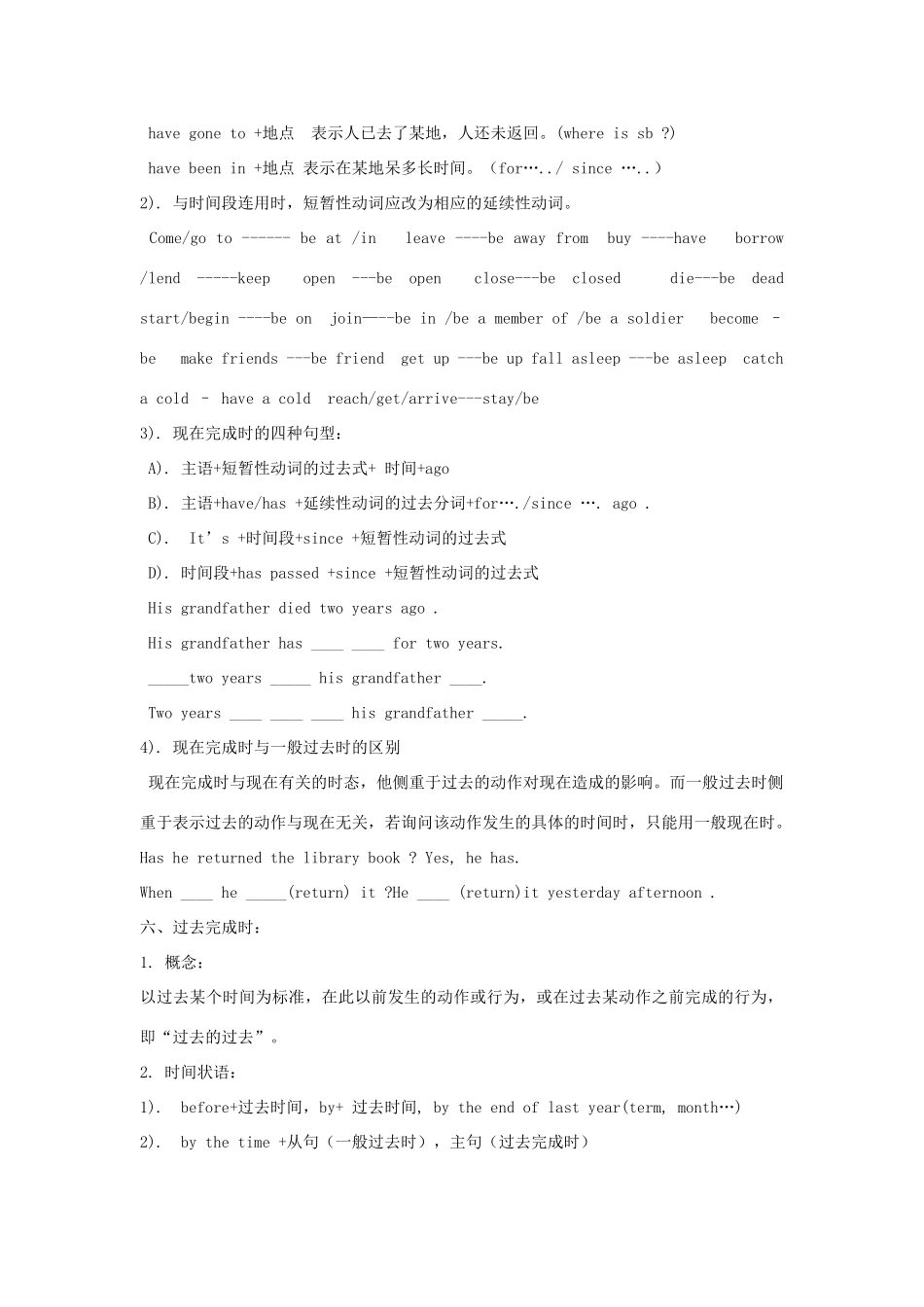英语词法专题讲座八:动词及时态一、一般现在时: 1. 概念:经常、反复发生的动作或行为及现在的某种状况。也可表客观规律以及在时间,条件状语从句中表将来时(主将从现) 2. 时间状语: always, usually, often, sometimes, every week (day, year, month…), once a week, on Sundays, 3. 基本结构:①be 动词;am/is/are ② 行为动词: 动词原形、第三人称单数。4. 否定形式:①am/is/are+not; ② don’t /doesn’t +动词原形+…… 5. 一般疑问句:① 把 be 动词放于句首;② Do/Does +…+动词原形+…? 二、一般过去时: 1. 概念:过去某个时间里发生的动作或状态;过去习惯性、经常性的动作、行为。 2. 时间状语:ago, yesterday, the day before yesterday, last week(year, night, month…), in 1989, just now, at the age of 5, one day, long long ago, once upon a time, this morning 3. 基本结构:①be 动词;was/were …② 行为动词: 动词的过去式4. 否定形式:①was/were+not; ② didn’t +动词原形5. 一般疑问句:①was 或 were 放于句首;② Did +…+动词原形……?三、现在进行时: 1. 概念:表示现阶段或说话时正在进行的动作及行为。 2. 时间状语:now, at this time, these days, look, listen, can you see? Can’t you see ?之类的暗示语。3. 基本结构: am/is/are+doing 4. 否定形式: am/is/are+not+doing. 5. 一般疑问句: Is /Are …+doing sth ?四、过去进行时: 1. 概念:表示过去某段时间或某一时刻正在发生或进行的行为或动作。 2. 时间状语:at this/that time yesterday, at that time, at six yesterday evening, from eight o’clock to nine o’clock, last night 或以 when/while 引导的时间状语(过去进行时+when+一般过去时/ 一般过去时+while +过去进行时/过去进行时+while +过去进行时)。 3. 基本结构: was/were+doing 4. 否定形式: was/were + not + doing. 5. 一般疑问句: 把 was 或 were 放于句首。五、现在完成时: 1. 概念:过去发生或已经完成的动作对现在造成的影响或结果,或从过去已经开始,持续到现在的动作或状态。 2. 时间状语:recently, lately, since…for…, in the past few years, already, yet, ...


